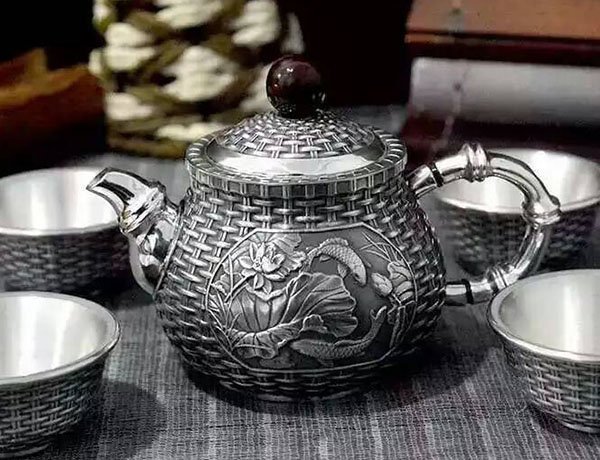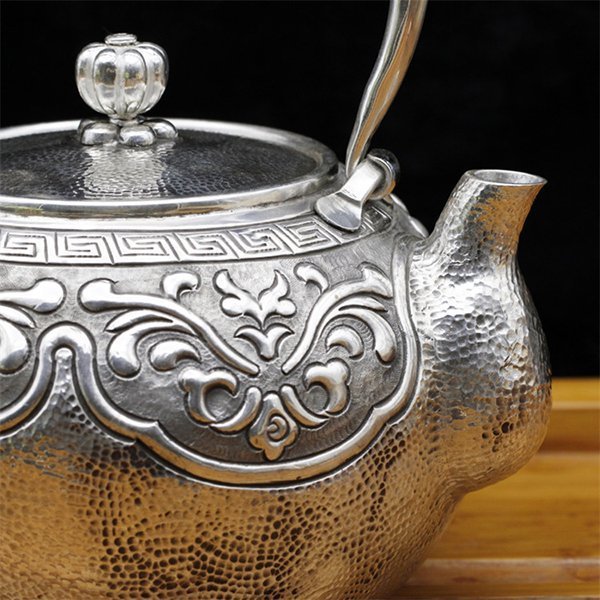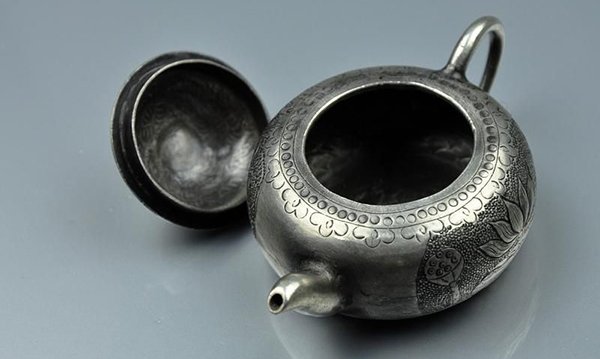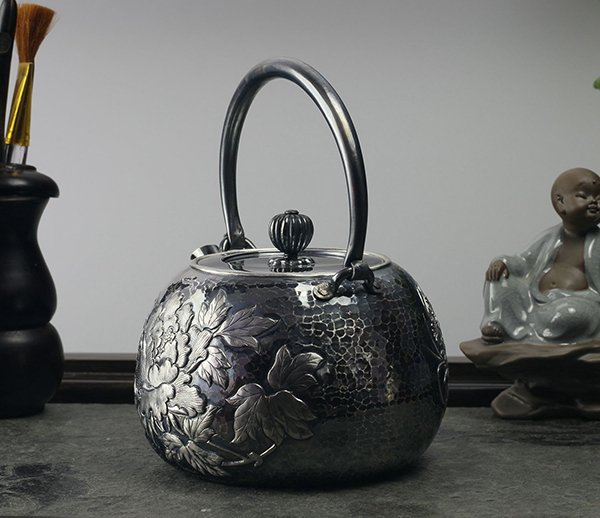Some people think that silver is a heavy metal and worry about heavy metal poisoning.
Is that genuinely safe for using a silver teapot?
Absolutely Yes!
After learning the silver teapot, you will find that it is safe, and even got some great benefits for the human body.
What’s The Benefits To Using A Silver Teapot For Brewing Tea
Softening Water Quality
As a teapot, we use it for boiling water when steeping tea.We know that the quality of water will influence the taste of tea. And use silver to boiling water can improve water quality.
During the heating process, the silver teapot will release a small number of silver ions.
The silver ions exchange with Calcium and Magnesium Carbonate compounds in the water(also the primary reason cause scale) to reduce the water pH and make it taste sweeter.
Bactericidal Effect
The silver ions released when heating, has the characteristics of high stability, low activity, fast heat conduction, and not easy to be corroded by chemical substances.The positively charged silver ions produced in the water can absorb the bacteria and seal off the enzyme system on which they live, making them inactivated to achieve the effect of sterilization.
A mere 50-millionth of a milligram of silver ions per liter of water is enough to kill most bacteria in the water.
Why The Silver Teapot Turns Black
After using several times, some people are confused that they found their silver teapot turns black.In the beginning, there are only some green spots on the silver teapot surface. By the time grows, the green spots begin to turn to black, and spread to the whole silver teapot.
What is going on?
After placing or using for times, the silver will be oxidized. And the color will turn green to black slowly. That’s a normal and natural phenomenon.
Under general circumstances, silver is chemically stable and does not react with oxygen in the air.
But when it comes to sulfides, it becomes very active. The silver is easy to oxidize with the sulfur in the air, and the sterling silver turns to silver sulfide, which is black.
For example, if we wear silver bracelets to soak in hot springs, the bracelets will turn to black quickly.And will the blackening of the silver teapot harmful to our health?
It will, but it does not matter. Such a little silver sulfide will not be a big hurt to our health.
But the best thing we need to do is to clean up the blackening of the silver teapot on time.
How To Clean Up The Silver Teaware Blackening
- Use the combination of the silver polishing cloth and the polishing stick. First, use the polishing stick to wipe the oxidized part. Then use the silver polishing cloth to wipe the whole teapot.
- Dab some toothpaste on a soft toothbrush and gently wipe the blackened surface of the silver teapot. After wiping off the oxidized black spots, wash out the foam with water, then dry the water with a soft dry cloth.
- Wrap the silver teapot in aluminum foil with soda powder, put it into a pot, boiling with water for a while. Because aluminum foil is more reactive than silver, a replacement reaction occurs between them and take the silver sulfide away.
How To Use The Silver In A Right Way
The silver teapot is so exquisite that we should pay great attention to it when using it. Anyway, it’s costly, and also has a very high collection value.- When using it the first time, you should wash it up with warm water.
- The silver teapot is suitable heating by the electric ceramic furnace or electric carbon furnace, try to avoid using fire heating directly.
- Don’t let the water level cross over 80%.
- During heating, supplement water in time when you find the water in the silver teapot is going dry.
- Every time after using, clean it and dry it up with a soft cloth.
- Once you find the black spots appear on the silver teapot surface, clean them up quickly.
- If you not use the silver teapot and going to place it for a long time, wrap it with a dry paper and place it in a ventilated environment.




No comments:
Post a Comment